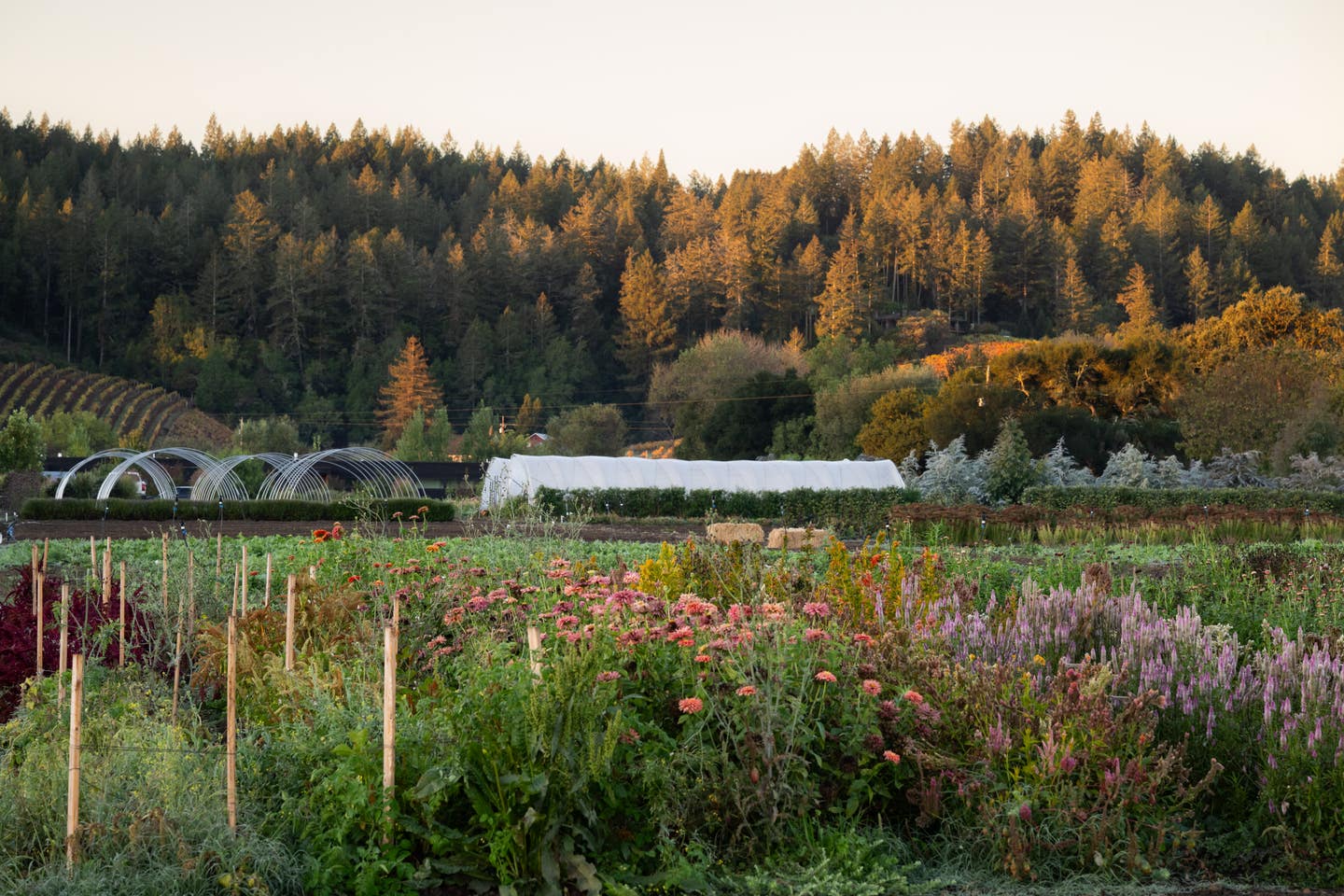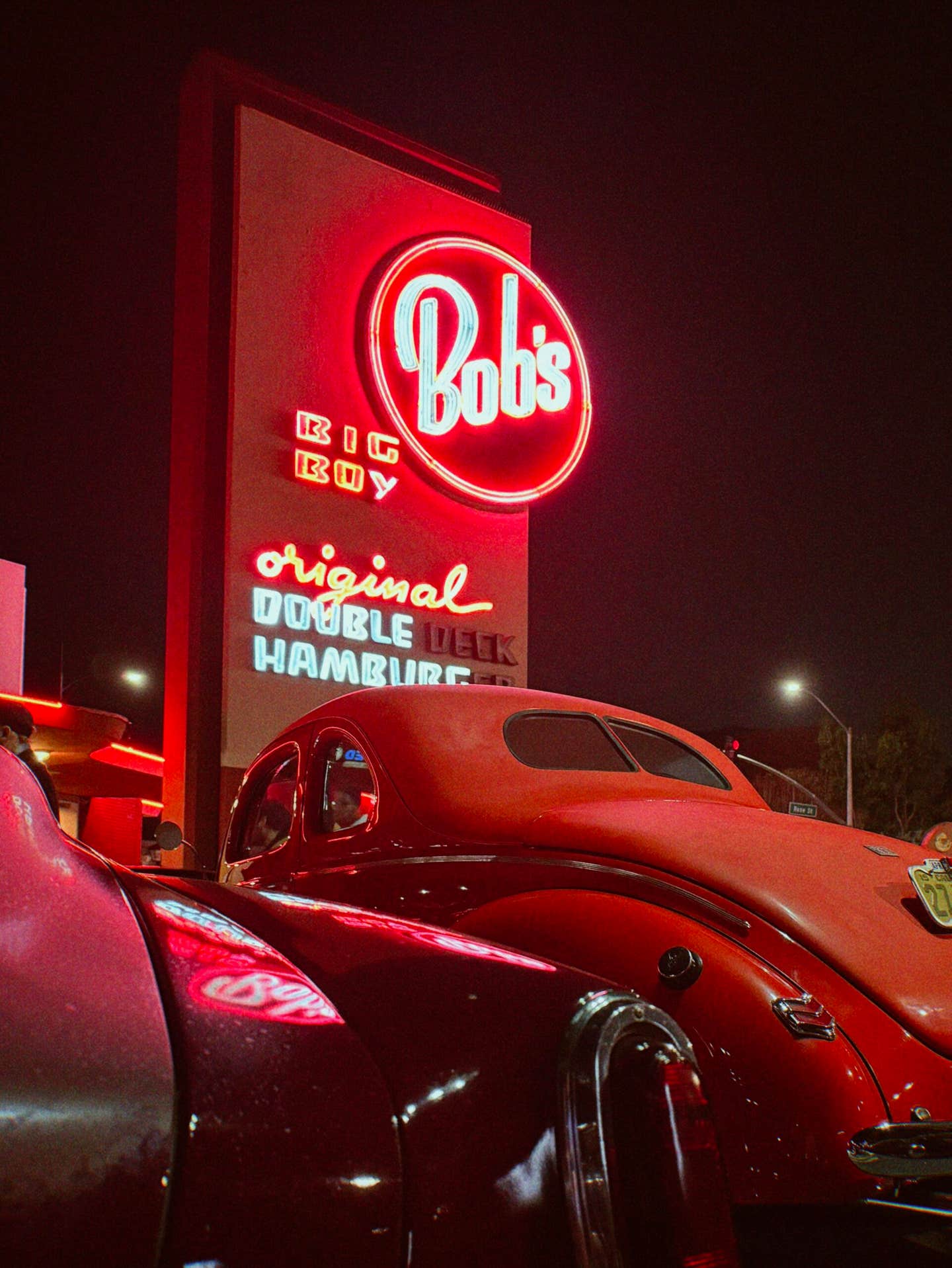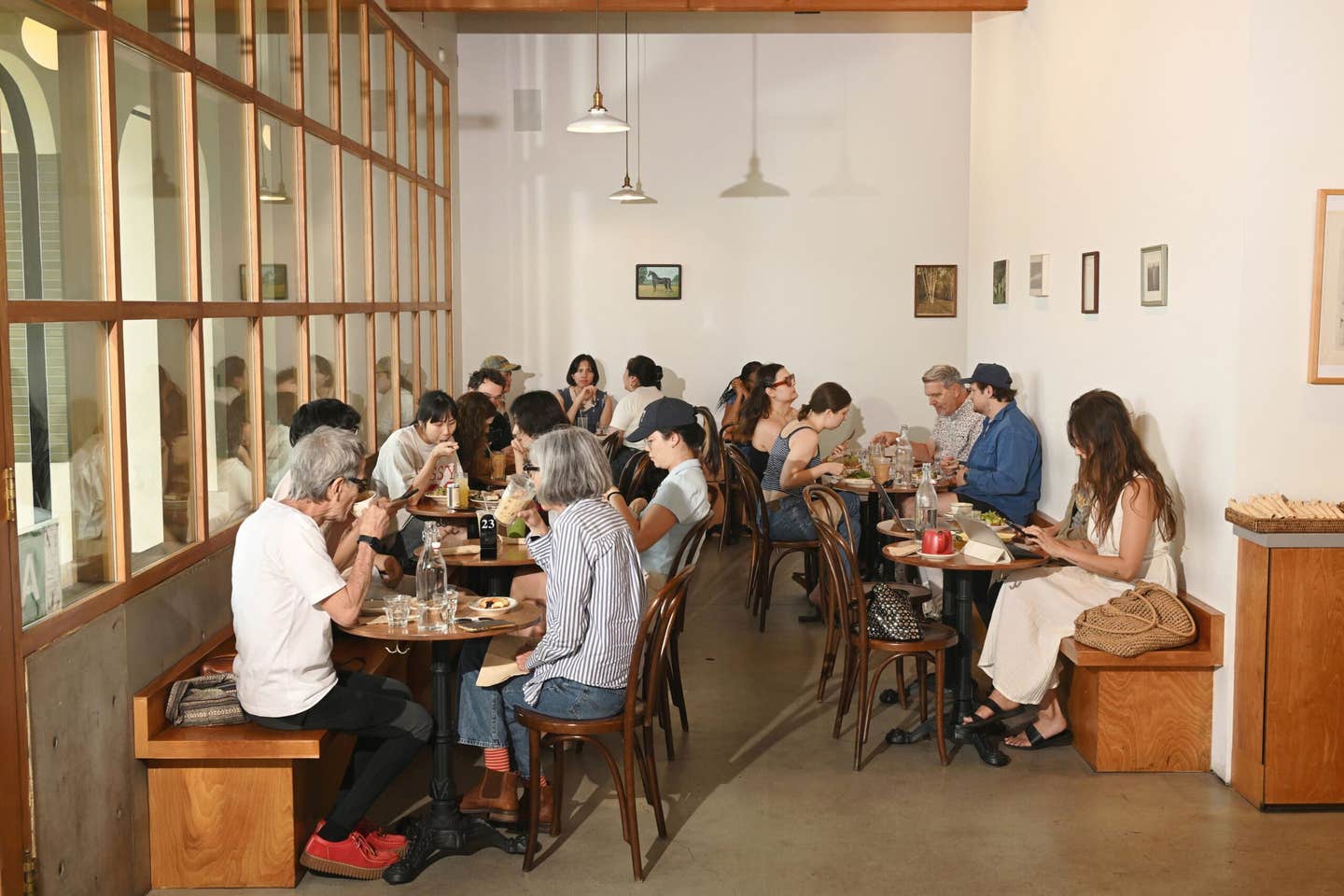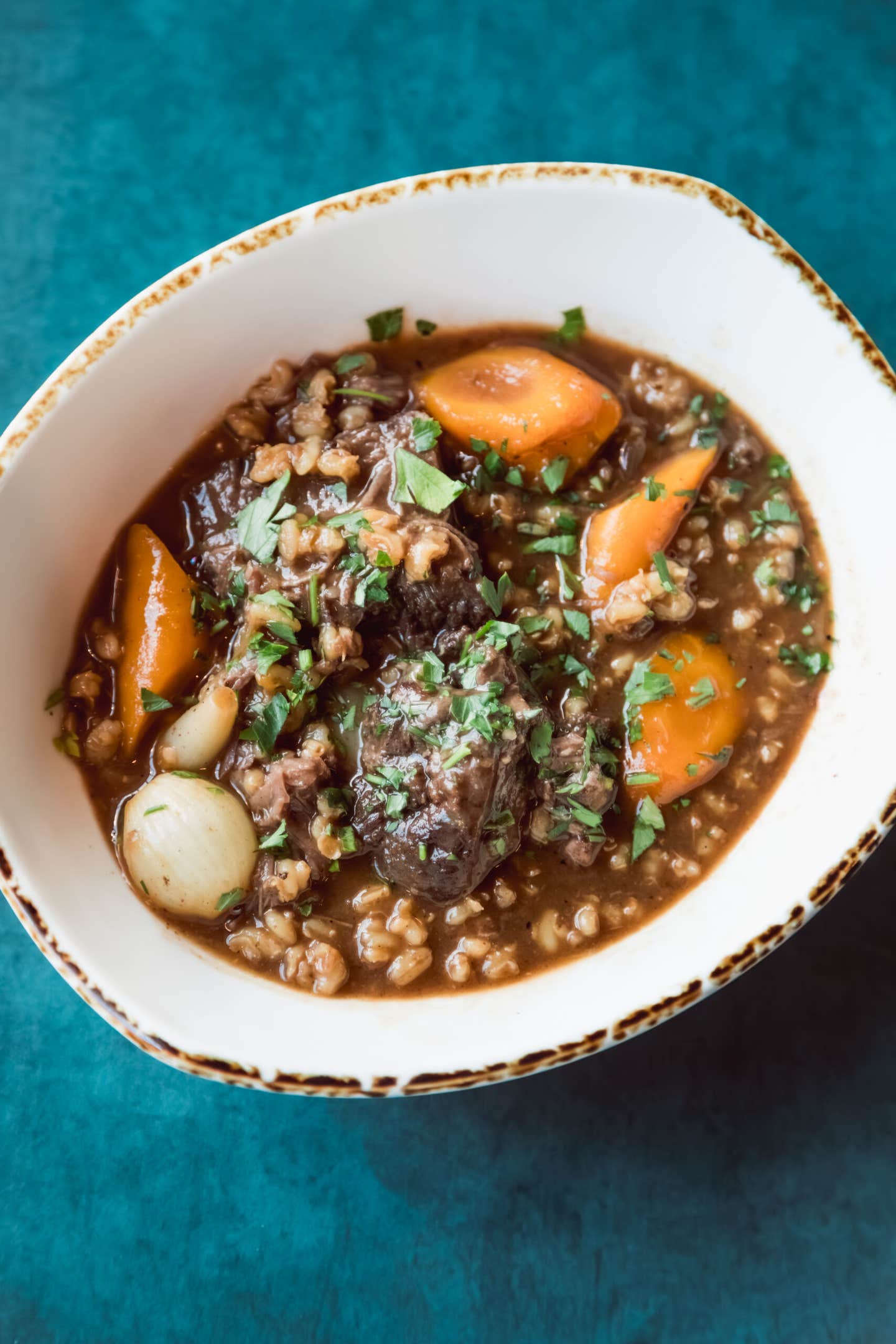Sarah Durning’s Pastry Magic at Dunsmoor
One day, Sarah Durning is crafting an extravagantly frosted, multi-tiered wedding cake for 100 guests, and the next, she’s breaking down a hog with precision and grace.
by Amanda Lanza, Photos by Carolina Korman
One day, Sarah Durning is crafting an extravagantly frosted, multi-tiered wedding cake for 100 guests, and the next, she’s breaking down a hog with precision and grace for an intricate charcuterie project. Her skill set defies easy categorization—pastry chef, butcher, culinary historian, and mentor. She is all of these things, and she refuses to be just one.
For those of us in the know, Sarah Durning is a treasured individual in the close-knit LA chef community. Her presence is uplifting, team-centric, and hilarious. I met Durning years ago when I led the launch of a restaurant’s dinner service. As the only two women in a kitchen under a classically tortured male chef, our bond quickly formed. In those days, she says, I was her mentor—but now I’m one of many calling her for advice. “Sarah, how can I approach this sausage? How can I create a better texture for this cake?” She is my speed dial for a broader point of view on almost everything.
Dunsmoor, where Durning is executive pastry chef, is the culmination of her personal and culinary experiences and, in many ways, has also brought her full circle. Her journey to Dunsmoor started years ago in the lauded kitchen of Rustic Canyon under the helm of Chef Andy Doubrava and Pastry Chef Erika Chan. “I feel like Rustic was where my philosophy, understanding, and appreciation of food really bloomed,” Durning says. “My chefs were so instrumental in that, but really everyone around me was so respectful of the food, and curious.”
Rustic nurtured Durning’s desire to dedicate herself to her craft through knowledge and skill. In an environment where questions were celebrated, Durning learned to work every station, including supporting Erika Chan’s pastry station. But it was working with animal proteins at Rustic that stimulated her interest in anatomy and butchery, which led her to Curtis Stone’s Michelin-star butcher shop and restaurant Gwen.
At Gwen, Durning was under the guidance of her female charcuterie mentors, Teresa Cabansag and Katie Delgado Valdez. After Cabansag’s departure, Delgado Valdez and Durning had the major career opportunity of taking on the charcuterie program. “We were so aware of the animals we were working with,” Durning says. “The practice started to feel like sculpture. The whole time, you are respecting the life that you are taking this muscle from.”
Together, they created an environment that prioritized honor and respect for the life of the hog. They felt it was their duty to use every part of the animal to create a beautiful and delicious butcher counter and charcuterie program. Customers could source perfectly frenched lamb chops or an immaculate head terrine made by Durning or Delgado Valdez. “At times we were intense and protective about it,” Durning says. “But it was so important to us to treat this animal with care.”
The work at Gwen encouraged Durning to tap into her affinity for researching older traditions, methods, and stories. “Butchery is a practice that is so contextual; it is a conversation with methods of the past. Especially in a place like America that has very little charcuterie and butchery tradition, we would often ask why and seek out old texts to answer our questions.” She felt like her butcher era was guided by her desire to be a student immersed in a field of slow practice and dedication. After a project was complete, though, her chef’s point of view would always creep in: What happens after the butchering process? “Making charcuterie is a slow and patient art,” she says. “There was no other place in LA to engage in this whole-animal butchery and charcuterie at such a high level.”
It was Chef Erika Chan who tapped Durning to replace her as Dunsmoor’s pastry chef. When Chan first approached Durning about the position, it was a hard sell. Unlike most pastry programs, the use of modern equipment is forbidden at Dunsmoor—everything is done by hand.
“There’s no pastry chef like Erika Chan; she’s so creative and so hard working,” Durning says. “I was shocked when she reached out to me. I had such incredible meals at Dunsmoor prior to my employment, so I knew what they were putting out was very impressive. I took this job because it offers a specific set of challenges and requirements, and I am interested in its grounding in American Heritage traditions.” Durning hand-churns the ice cream, kneads the dough in all the pies, and makes every sweet with love and care. No stand mixer, no ice cream maker, even that whipped cream is whipped by hand!
Durning understands how it could be a challenging position for a classically trained pastry chef: “I don’t have a team to help me; it can be isolating. In times where I’ve tried to do the most, I was overwhelmed.” Grounding herself in the basics has allowed her to grow and shine in this role, “I chose to take everything back to the studs and center the work on technique.” This focus shines in all her dishes, with the best-textured ice cream you have likely ever tasted, the most gorgeous browned-butter apple pie, or the ever-iconic sticky date pudding.
In her search for American Heritage inspiration, Durning has encountered some truly obscure resources. “I have watched YouTube videos of farmers in Wisconsin with 14 views churning ice cream in rickety old barrels. In stripping it all back, I am forcing myself to consider every component and every movement to make something sincere and delicious.”
Growing up in a hospitality-industry family, food and dining were always central to the Durning’s life. Their home was filled with cookbooks and the tools to create, which is exactly what Sarah did. She was working on weekly intricate projects as young as age 7. One of her first memories was her obsession with a chocolatier cookbook, from which she was allowed to do one project per week.
“I would always choose something needless and extravagant. When I was cooking and baking, it was the only time I didn’t feel depressed and alone.”
Though she felt deeply happy creating edible delights, this practice quickly became a mask for her disordered eating. “I always wanted treats to binge on. I had the most insatiable sweet tooth, and we had all these supplies at my disposal. I wanted to create something tangible and elaborate just to make it disappear. My parents celebrated my weekly pastry projects as achievements but didn’t realize it was also a path of my abuse.”
Healing from an eating disorder in an environment obsessed with food has been a critical part of her journey, and she feels lucky that there’s an opportunity to heal from these disorders by actively participating in them.
“This sort of addiction lives on and is there with you forever. Sometimes, it makes me not want to work in pastry and subject myself to such an unnecessary trigger. I felt so free from that feeling when working in a butchery. It’s not why I chose it, but I remember feeling a weight off my shoulders.”
It’s been over six years since Durning has engaged in any behaviors associated with her disordered eating, a fact she is proud of. She knows her story can be an inspiration and resource for others in the industry who are going through similar experiences.
Emotionally, she’s found herself in the kitchen boys’ club multiple times. The gendered conversation in hospitality is an exhausted one, but when you’re still the only woman in the room, it’s an obvious reminder that even in 2025, many restaurants are still a man’s world.
“I have maybe one week of the month where I feel really on top of my game and confident. The other weeks, my mind tricks me, and sometimes I can barely stand up. The men around me simply do not go through this in the same way.” She feels fortunate to be at Dunsmoor because the management is open to knowing how the employees feel and nourishing them at work. “It’s one of the first restaurants I’ve been at where they really hear us out and want to be supportive of us and our mental health.”
While the modern restaurant world tends to favor specialization—pastry chefs stay in pastry, butchers stay in butchery—Durning resists those boundaries. His approach to food isn’t about mastering a single discipline but about understanding the interconnectedness of technique, history, and intuition.
“I want to do what satiates me in the moment,” she says. “I find security in knowing I can always explore the unknown in the culinary field. Nothing needs to be permanent. The longevity of my career will be because I can switch focus and apply myself in different ways. The more I learn, the more I see how everything overlaps,” she says. “It’s all part of the same story.”
Regarding what’s next, she’s trusting her intuition. “When it’s time for me to explore something else, it will slap me in the face. Until then, I gain so much from the community and environment that is Los Angeles cooking.”





